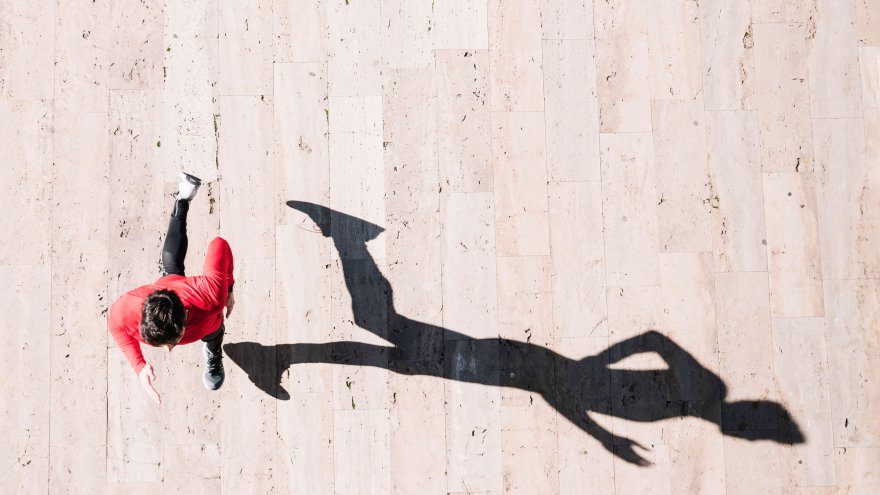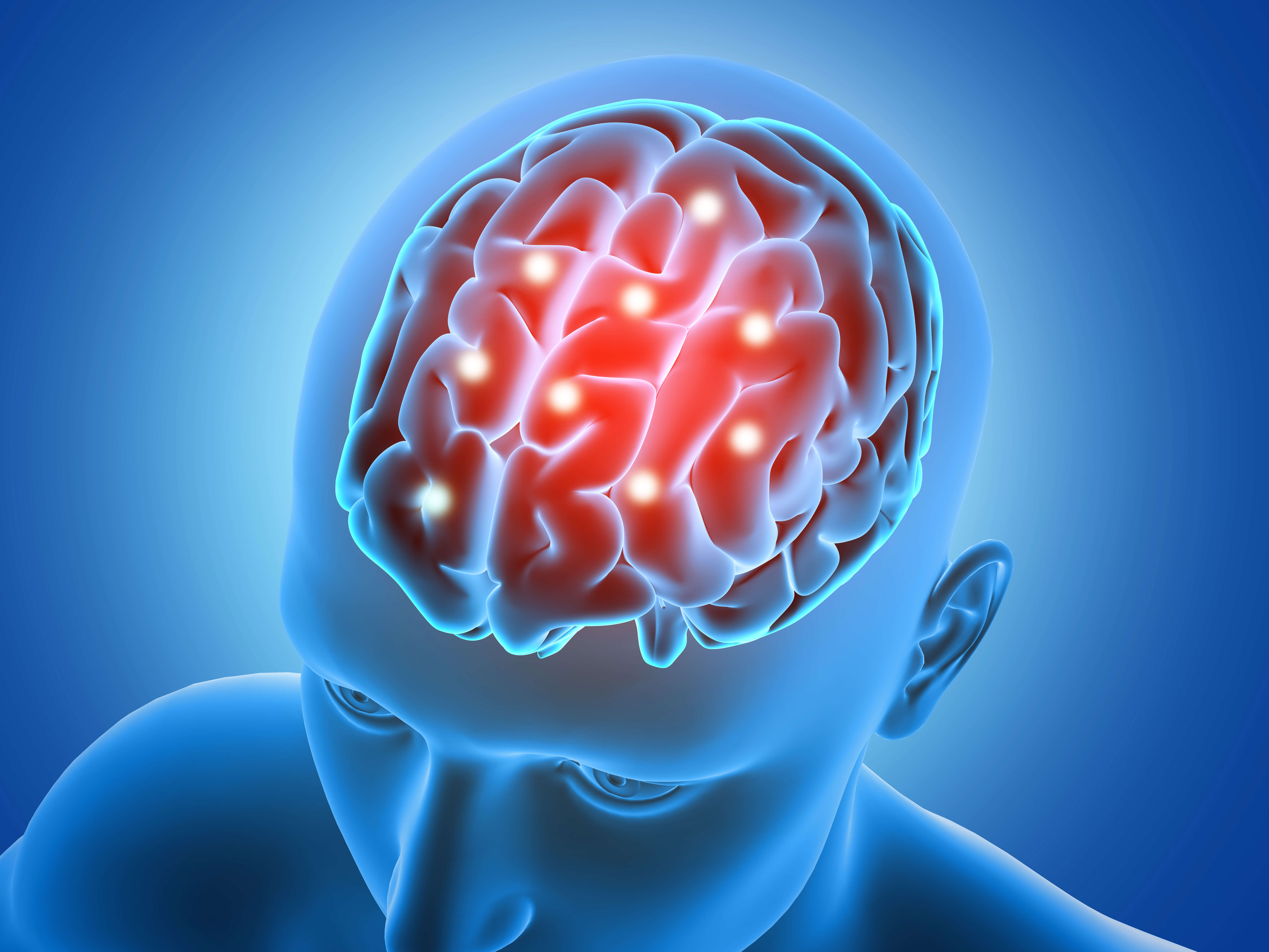The Science Behind Why It “Hurts so Good” for Some

Us humans, the Homo sapiens species, survived and flourished because of our ability to run. We out-competed other Homo species with our ability to outlast and run our prey to exhaustion. According to the Endurance Running Hypothesis, specific adaptations that made this distance running possible include:
- Thermoregulatory adaptations such as our ability to sweat across our whole bodies
- Stabilization adaptations such as superior balance mechanisms, decoupled head, and shoulders with a nuchal ligament, a short snout and flat face, enlarged gluteus muscles and short toes
- Stress reduction & shock absorption adaptations such as enlarged vertebrae and discs, increased joint surfaces and an enlarged heel bone
- Other adaptations for efficiency such as shorter arms, decreased upper body mass, longer legs that thin out towards the bottom and a longer Achilles tendon
But what was the driving force of these intense aerobic workouts? Were our forefathers that desperate for the rewards of a meaty meal, or was there something else? Surely there should be easier ways to get our bellies full? Anthropologist David Raichlen believes that human brains are actually “wired to run”. Enter the concept of the runner’s high.

Runner’s High: What and How?
Whether you have experienced it or not, you at least heard of it. The Runner’s High. But what is it and how does it work? Firstly, those who have experienced it describes it as a feeling of elation, even euphoria. Runners say of this experience that they felt light and that a hard run felt easier than it should have. Some also report that a runner’s high diminishes anxiety and pain or that it becomes easier to push through pain.
Initially, it was thought that the runner’s high was the release of endorphins or feel-good chemicals. However, scientists found that endorphins are actually too big to pass the blood-brain barrier easily, but that they rather work on muscles to dampen the pain.
In his 2012 study, Raichlen found that humans and other distance-running mammals such as dogs experience increased endocannabinoid signaling during a moderate to strenuous aerobic workout. Endocannabinoids (eCBs) are endogenous (made within the body) neurotransmitters that affect the cannabinoid receptors in the brain’s reward regions in a similar way that marijuana does. This was corroborated in a 2015 study on mice by a group of scientists from Germany. The researchers found that the elevated levels of anandamide, an endocannabinoid, was indeed was responsible for the reduction of pain and anxiety, two crucial aspects of a runner’s high. Unfortunately, they haven’t figured out a way to test for euphoria in mice yet.

As you already may know, a runner’s high doesn’t come cheap. Most sources report that, in order to achieve a runner’s high, a runner should aim for a pace at between 70 to 85 percent of his or her age-adjusted maximum heart rate, which is not your daily walk in the park. Rather think tempo run. Also, short sprint won’t do. Apparently, the sweet spot lies between one and two hours of workout for an almost guaranteed spike in endocannabinoids and a resultant runner’s high.
Then Why So Many Non-Runners?
So, just like with any other substance that triggers the brain’s reward centers, we can become addicted to running. Or at the very least yearn to experience that feeling of euphoria and freedom to fly on a regular basis. Because nature intended everyone to want to run frequently in order to survive, right?
Well, not exactly. Although the release of feel-good endorphins and endocannabinoids originally aided us to run for our lives, like for hunting or fleeing from a predator, we are equally wired to conserve energy. According to postulations by scientist Harold Lee and his colleagues from the Brown University School of Public Health on Rhode Island, early man dealt with quite the opposite dilemma than we do today as modern humans.

Modern societies deal with some of the highest occurrences of inactivity and associated obesity. Various studies have shown that, contrary to popular claims that “exercise makes you feel good”, most people report that they didn’t enjoy exercise and were thus less inclined to repeat it.
In their fascinating research, Lee claims that the cause for this phenomenon can be traced back to our evolutionary roots. They explain that natural selection actually favored early humans who were inclined to conserve energy. This was simply because hunting and fleeing predators required high energy expenditure, and any unnecessary movement could potentially lead to the detriment of the species. Unlike today, food and especially sugar and fat, was a scarce commodity so energy had to be preserved primarily for vital activities.
So Are We Then Doomed?
If we are then naturally inclined to be inactive because of how we were wired and since we don’t have to run to eat any longer, are we then destined to eat and sit ourselves into extinction?
Apparently not. According to Lee et. al. in his publication The Exercise–Affect–Adherence Pathway: An Evolutionary Perspective, it is within our ability to rewire our brain to love exercise. Although we may be naturally inclined to associate exercise with feelings of displeasure or pain, this can change when we can once again see the necessity of physical activity.
How do we do that? Lee suggests that this can be achieved either by promoting activities that have an inherent usefulness, such as walking for transportation or to mimic activities that served a purpose in ancestral environments such as sports that involve chasing and fleeing. And with sufficient repetition and positive affirmation, we know that anything, even maintaining a lifelong, health-promoting exercise regime, can become a habit.
Sources
- , 'Wired To Run': Runner's High May Have Been Evolutionary Advantage, Online publication
- , How to Achieve a Runner’s High, Online publication
- , What Causes the Legendary Runner's High and How to Feel It, Online publication
- , The Exercise–Affect–Adherence Pathway: An Evolutionary Perspective in Front Psychol. 2016; 7: 1285, Scientific paper
- , A runner’s high depends on cannabinoid receptors in mice. In: PNAS 112 (42) 13105-13108 , Scientific paper
- , Wired to run: exercise-induced endocannabinoid signaling in humans and cursorial mammals with implications for the ‘runner’s high’. In: Journal of Experimental Biology 2012 215: 1331-1336, Scientific paper
Latest Articles
 Is Running on a Treadmill Easier Than Running Outside?Runners have their own preferences, whether it is treadmill running, running outside on the road, or exploring trails. So...
Is Running on a Treadmill Easier Than Running Outside?Runners have their own preferences, whether it is treadmill running, running outside on the road, or exploring trails. So... Is It OK to Use Trail Running Shoes on the Road?While trail running shoes can be used on roads, especially in situations where a runner encounters mixed terrains or pref...
Is It OK to Use Trail Running Shoes on the Road?While trail running shoes can be used on roads, especially in situations where a runner encounters mixed terrains or pref... How to Fix Sore Quads After Running?Rest, ice, gentle stretching, and over-the-counter pain relievers can help soothe sore quads after running. Also, ensure ...
How to Fix Sore Quads After Running?Rest, ice, gentle stretching, and over-the-counter pain relievers can help soothe sore quads after running. Also, ensure ... 10 Fruits With The Most Electrolytes to Replace Sports DrinksThese fruits are high in electrolytes such as potassium, magnesium, and calcium, essential for hydration, muscle function...
10 Fruits With The Most Electrolytes to Replace Sports DrinksThese fruits are high in electrolytes such as potassium, magnesium, and calcium, essential for hydration, muscle function...

